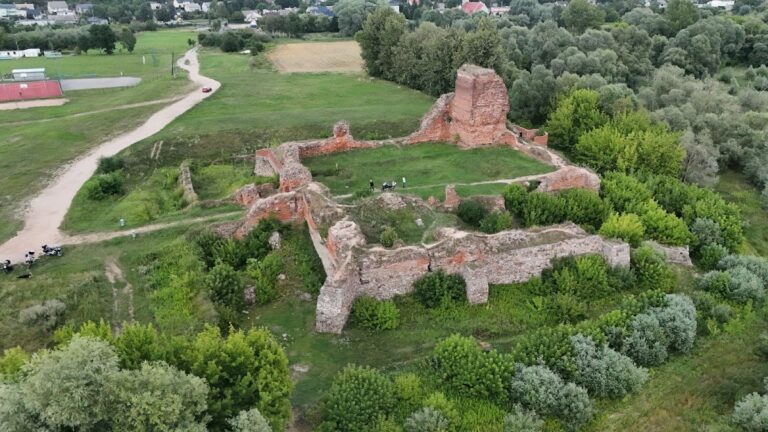Złotoria Castle: A Medieval Polish Fortress with a Strategic Role
Visitor Information
Google Rating: 4.6
Popularity: Low
Google Maps: View on Google Maps
Country: Poland
Civilization: Unclassified
Remains: Military
History
Złotoria Castle is located in the municipality of Złotoria, Poland. It was originally built by the Polish monarchy during the medieval period.
The site’s earliest known fortification was a wooden stronghold held by the Mazovian dukes in the early Middle Ages. In 1343, King Casimir III the Great ordered the construction of a new brick castle on this site. The primary purpose was to protect the border of the Dobrzyń Land and keep watch over the nearby Teutonic Knights’ activities centered in Toruń, reflecting the tense political and military environment of the time.
After King Casimir’s death in 1370, control of the castle passed to Kaźko Słupski. However, in 1373, Duke Władysław Biały of Gniewkowo seized Złotoria Castle and used it as a base for raids into the Kujawy region. These actions led to a royal military campaign against him, culminating in a siege lasting several months in 1376. Władysław Biały eventually surrendered the stronghold to the forces loyal to the crown in early 1377.
Between 1379 and 1392, the castle came under the possession of Władysław Opolczyk. In 1391, Opolczyk pledged the castle to the Teutonic Order in exchange for 50,000 florins, an arrangement deemed illegal by the Polish king. This transaction sparked disputes between the Polish crown under King Władysław Jagiełło and the Teutonic Knights. The king managed to regain control of Złotoria Castle in 1404 by redeeming it.
During the escalating tensions that led to the Polish–Teutonic conflicts, the castle faced direct military action. In September 1409, following an eight-day siege led by the Teutonic Grand Master Ulrich von Jungingen, Złotoria Castle was captured. The Teutonic Knights destroyed the fortress and massacred the Polish garrison, marking a violent episode in the castle’s history.
After the First Peace of Toruń in 1411, which temporarily ended hostilities, the castle returned to the Kingdom of Poland. The treaty required the Teutonic Order to compensate approximately three tons of silver for the damages caused during the siege. However, over time, particularly following the Second Peace of Toruń, the castle lost its military importance as the contested border along the Drwęca River ceased to exist.
In the early 19th century, partial demolition efforts were carried out on the castle ruins. These efforts were not fully successful, largely due to the exceptionally strong mortar used in the original construction, which prevented extensive dismantling.
Remains
Złotoria Castle was originally designed as a Gothic-style brick fortress set on an elongated rectangular layout covering about 1,750 square meters. The complex included a residential building, surrounded by defensive walls that enclosed a courtyard. A prominent defensive tower with buttresses was part of the fortifications, while the eastern side was safeguarded by a moat, utilizing natural water defenses.
The construction involved heavily fired bricks, which were bonded using an unusually strong mortar. This robust building method has contributed greatly to the preservation of the remaining structures, making the ruins notably resilient over the centuries.
Today, surviving elements include a section of the square tower, which rises to two storeys. Portions of the perimeter walls remain standing, as well as parts of the forecourt walls that once protected the approach to the castle. These fragments offer valuable insight into the castle’s original form and defensive capabilities.
The castle’s position was strategically chosen on a high ground between the Vistula River and the north-flowing Drwęca River, highlighting its role in monitoring border activity and controlling movement along important waterways in medieval Poland.
No decorative features or inscriptions have been recorded at the site, and no specific artifacts such as tools or pottery have been documented in the archaeological record. The existing ruins stand as a testament to the site’s martial history and its robust medieval construction techniques.










